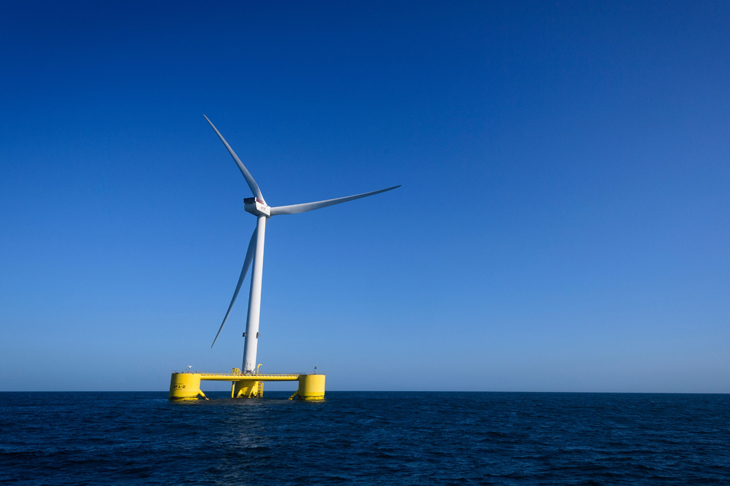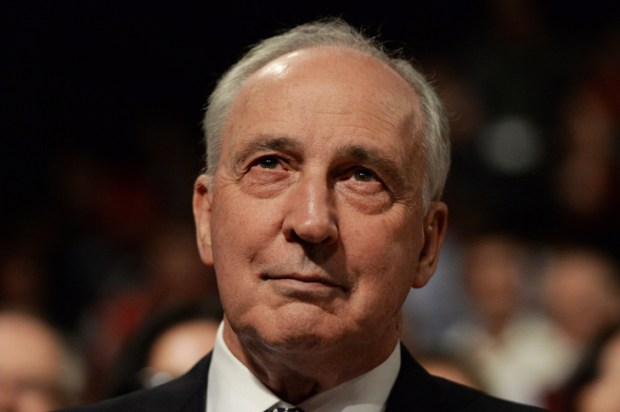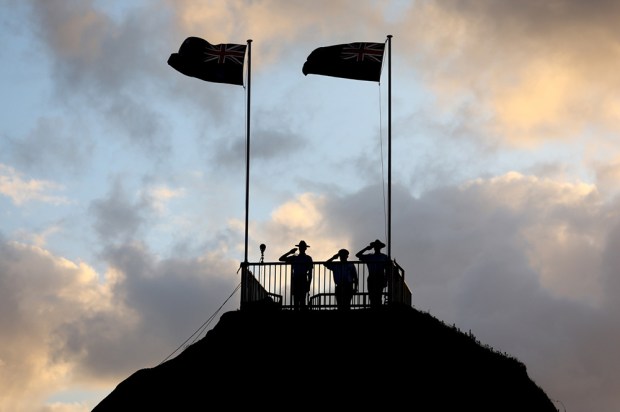How long does it take for a wind farm to become carbon neutral in some of the best wind conditions in Queensland? If you guessed never, you are right.
State modelling purports to show that Mount Emerald, near the World Heritage rainforests of Far North Queensland, gets some of the strongest wind. If that’s the strongest, wind power in the Sunshine State it’s a dud.
The Mount Emerald wind farm has 53 turbines that are meant to be able to generate up to 180.5 megawatts (MW) of power.
Wildlife photographer Steven Nowakowski of Rainforest Reserves Australia crunched the National Energy Market (NEM) data for the Mount Emerald wind farm for 2022 and sent it to state and federal politicians.
It shows that on 63 days, more than two months of the year, the turbines generated no energy at all. On 107 days, they generated 10 MW or less. So, for almost a third of the year at one of the best-located wind farms in Queensland, power was about half of one per cent of the maximum so-called nameplate capacity.
On 36 days the capacity factor (actual power as a percentage of maximum capacity) was a piddling 12 per cent or less. On another 32 days, the capacity factor was 17 per cent or less. That accounts for almost six months of the year.
The maximum achieved at any time was 100 to 110MW, less than 62 per cent of the nameplate capacity, and that was only achieved on a paltry 12 days of the year. The average capacity factor was 27 per cent and the median, the most accurate measure in a skewed data set, was only 18 per cent.
Mount Emerald is meant to generate 63 MW per year (an implied capacity factor of 35 per cent) but for six months each year it generates less than 16 MW, and on average less than 49 MW a year.
This is not surprising. The further south you travel in Australia the better the wind. The best wind is in the south and offshore, coming from the Roaring Forties.
Given these facts, why are 15 onshore wind farms being considered or under construction in Queensland? Perhaps because wind farms receive generous subsidies. How much are the subsidies? There is zero transparency. One whistleblower claims it is as much as $600,000 to $900,000 per year. Who knows?
The six offshore wind zones announced by federal Climate Change and Energy Minister Chris Bowen late last year mostly take advantage of southern exposure but they will also be subsidised. They are located on the Gippsland coast, in Victoria’s southeast, the Hunter Valley and Illawarra in New South Wales, Portland in Victoria, Northern Tasmania, and Perth and Bunbury in Western Australia.
‘We know Australia’s the world’s largest island, but we have no offshore wind,’ Bowen said at a press conference in the Port of Newcastle in NSW on July 12.
‘That is craziness, and we’re fixing it,’ he continued, declaring the Hunter Australia’s second offshore wind zone.
The area that the Minister declared an offshore wind zone is intended to generate more than five gigawatts of power.
‘Five gigawatts, for those of you who don’t work in energy, is a lot of gigawatts. That’s a lot of power that will come from offshore wind.’
But is it sensible to declare an offshore wind zone anywhere off the coast of NSW?
By accident or design, on the same day that Bowen announced the Hunter as Australia’s second offshore wind zone, Net Zero Australia (NZAu), a partnership between the University of Melbourne, the University of Queensland, Princeton University, and international management consultancy Nous Group launched its ‘Mobilisation report: How to make net zero happen’.
The NZAu report modelled six scenarios with differing energy mixes, costs, and other constraints using a method developed by Princeton University and Evolved Energy Research for its 2020 Net-Zero America study. The report specifically asks which net- zero options Australia should accelerate.
The critical point is that in no scenario did it make sense to develop offshore wind projects off the coast of NSW.
They write: ‘Offshore wind faces the highest barriers due to the need for large subsidies and long lead times to develop initial projects, establish supply chains, and provide grid access. No NZAu scenarios chose NSW projects because of the high cost of floating platform technologies and moderate winds, an additional risk to pipeline realisation.’
When they say ‘large subsidies’ they mean larger than for onshore wind. Despite these barriers, they note that about half of the announced NEM pipeline is off the coast of NSW.
No one could accuse the authors of the NZAu report of being anything but true believers in renewable energy and yet even for them NSW offshore wind farms made no sense.
And if this is true for offshore wind in NSW, it is all the more true for onshore wind in Queensland, so much farther removed from the unobstructed Roaring Forties.
As for how long it takes for a wind farm to become carbon neutral, the NZAu report also has an answer.
Carbon neutrality is achieved when all the carbon dioxide released to clear the forests and build the roads, turbines, new transmission lines and lithium batteries has been paid off by carbon dioxide-free energy. In addition, it has to cover massive duplication of resources because the actual capacity is so much lower than the deceptive nameplate capacity.
But apart from all that, the NZAu report states that all its scenarios require a new large fleet of gas-fired peaking power plants to back up wind and solar plants, with at least 6 gigawatts added each year between 2035 and 2040, compared with the current pipeline of 3.5 gigawatts, and with carbon capture and storage used to reduce emissions.
In other words, as far as we can see into the future wind will have not just its own carbon footprint and that of all the associated duplication, transmission, and batteries, but that of the gas on which it relies.
So why are we threatening our precious World Heritage Rainforests in Far North Queensland with heavily subsidised, low-level wind farms that have to be backed up by gas?
Perhaps the answer is blowing in the wind. It isn’t apparent anywhere else.
Got something to add? Join the discussion and comment below.
Get 10 issues for just $10
Subscribe to The Spectator Australia today for the next 10 magazine issues, plus full online access, for just $10.
You might disagree with half of it, but you’ll enjoy reading all of it. Try your first month for free, then just $2 a week for the remainder of your first year.














Comments
Don't miss out
Join the conversation with other Spectator Australia readers. Subscribe to leave a comment.
SUBSCRIBEAlready a subscriber? Log in